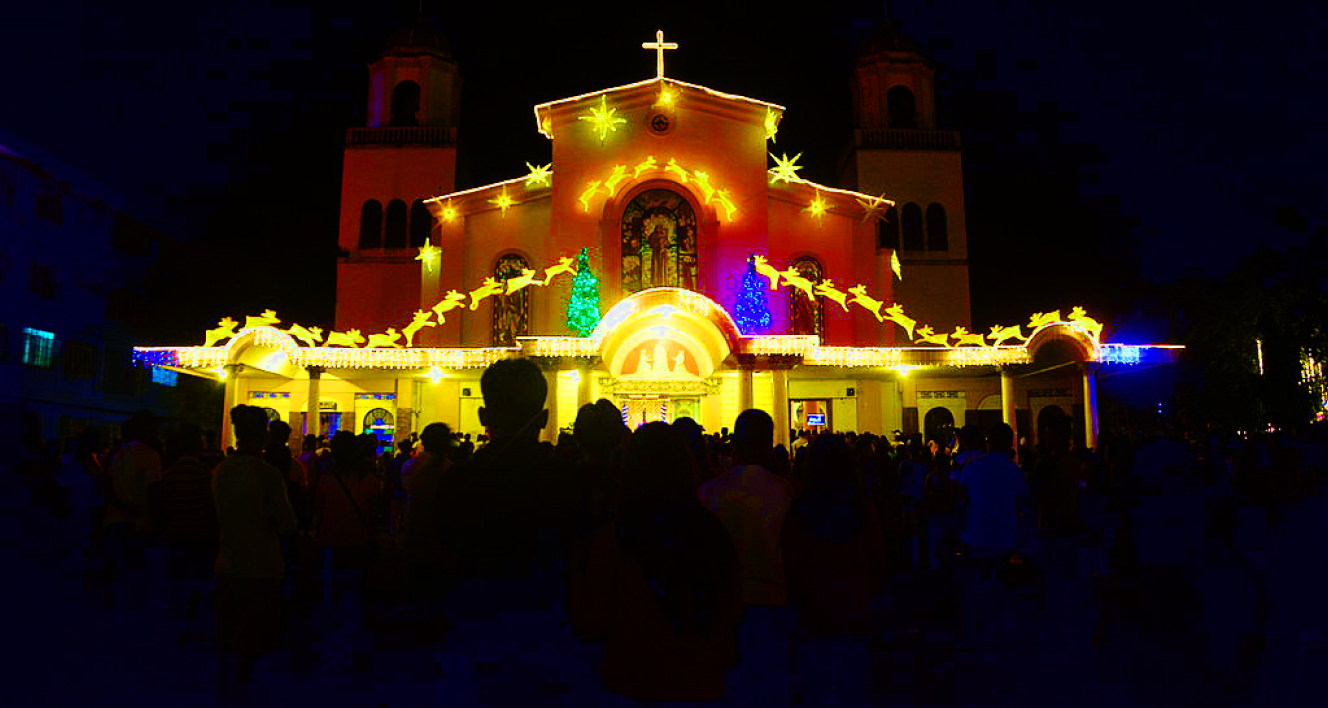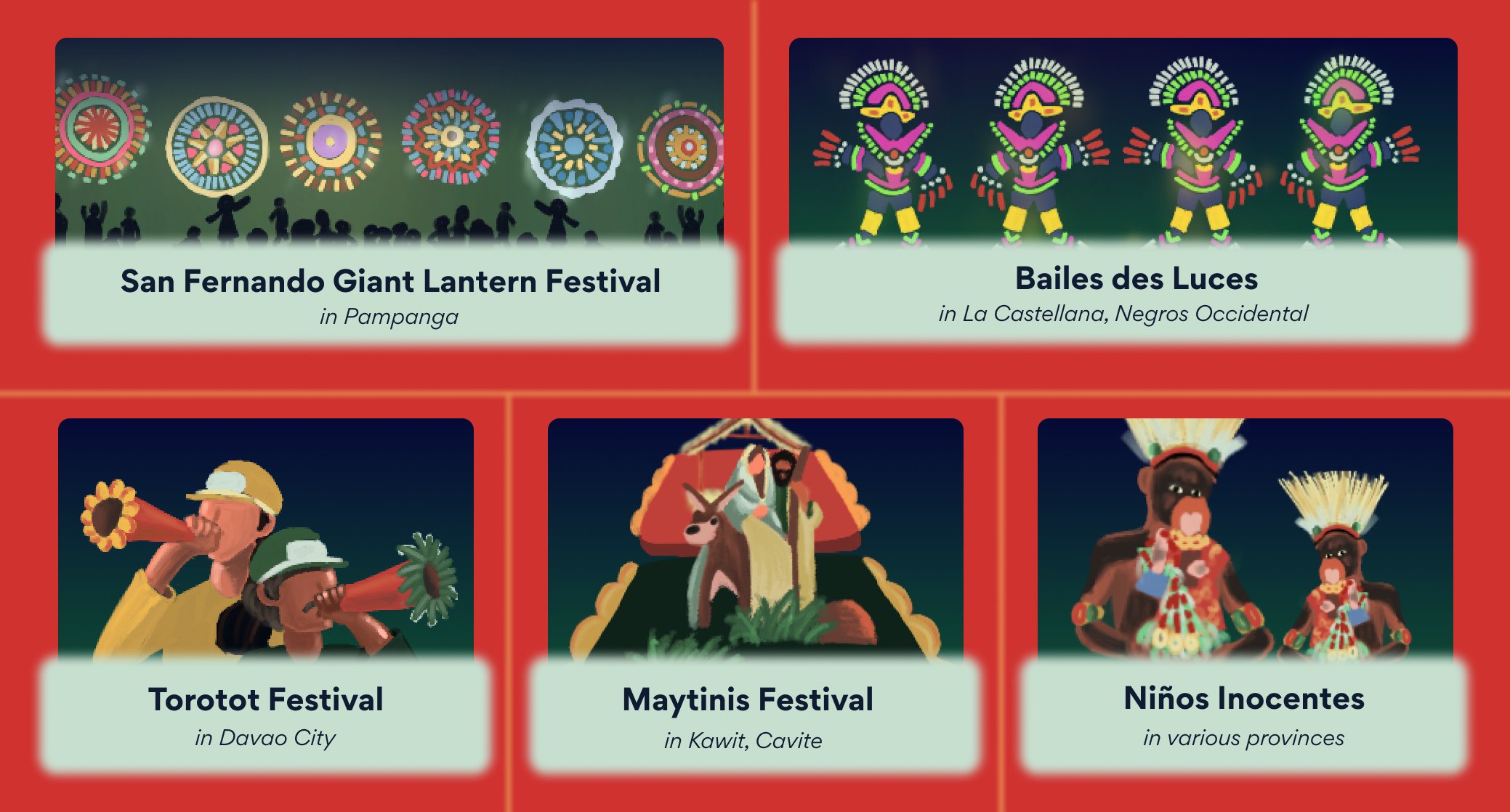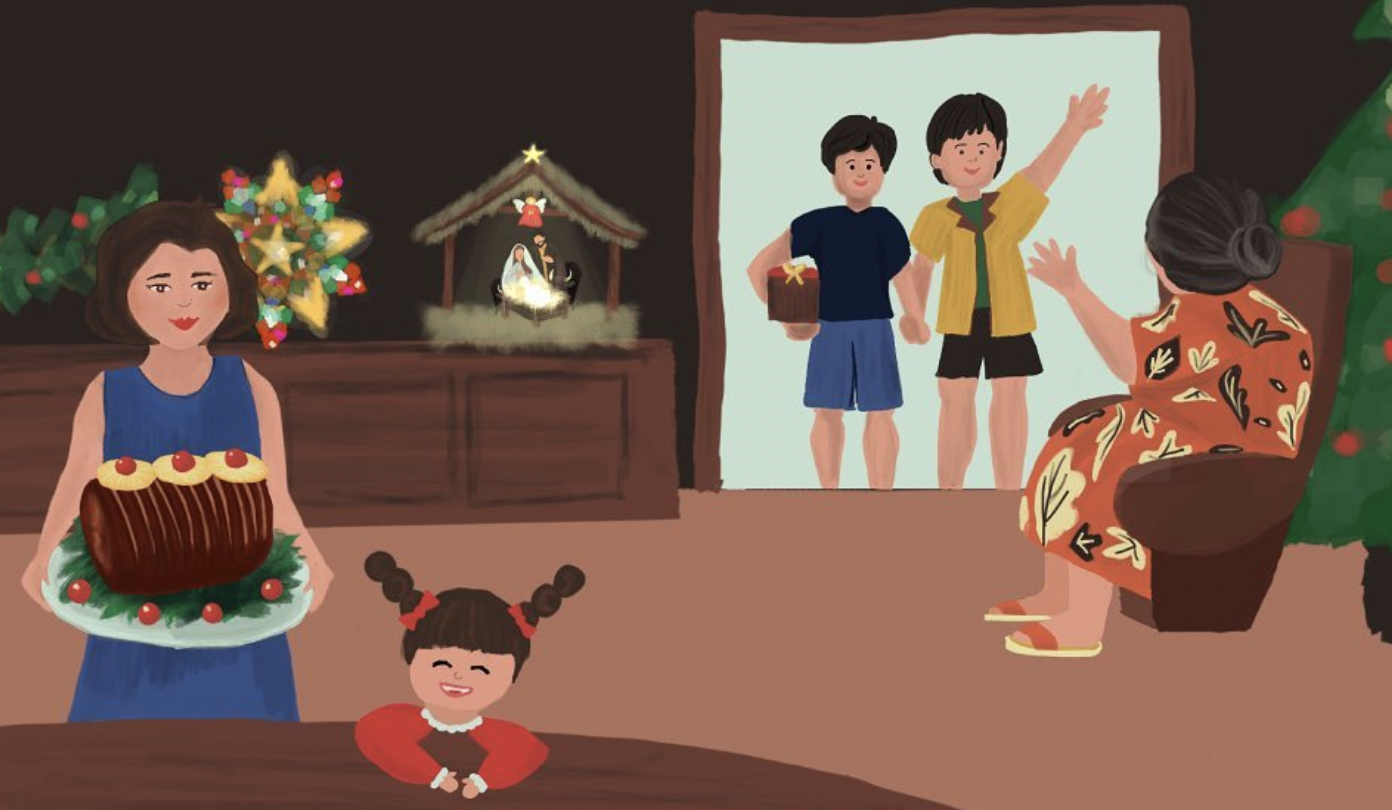Christmas in our hearts
The Philippines’ love affair with Christmas
With the longest-spanning Christmas season in the world, the Philippines’ love affair with Christmas has taken a life of its own after its introduction during the Spanish colonial period. From music to decorations to food, we dive into what makes Filipino Christmas a special holiday not just for families but for Filipino communities of all kinds.
Read more to find out.
In the Philippines and other countries with a sizeable Filipino diaspora, Christmas preparations usually begin at the start of what we call the “-ber months” (i.e., September) and is celebrated all the way up to the Feast of the Epiphany on January 6th. Unsurprisingly, the country boasts the longest-spanning Christmas in the world.

As early as September 1st, the Yuletide season begins with a pronounced spike in search and listening behaviour of Christmas music. While Filipinos can and will sing along to any holiday tune, their favourite by far is “Christmas in Our Hearts”—a classic from the '90s, composed by the father of Philippine Christmas music himself, Jose Mari Chan.

Originally a holiday introduced during the 333 years of Spanish colonisation, Filipinos have since then added their own unique spin to Christmas celebrations. Arguably the most significant contributor to the love for Christmas is religion: 8 out of 10 Filipinos are Catholic.
Christmas increasingly turned into a commercial affair over the years due to the rise of Overseas Filipino Workers (OFWs). These modern-day heroes leave the motherland to provide for their families and in turn, boost the economy through foreign remittances. Employees who decided to stay home in the late 1990s benefitted from the emergence of call centres that outsourced their labour to Filipino workers.
This coincided with the founding of popular malls, which today form a central aspect of Filipino Christmas culture. Unlike other countries, malls in the Philippines are one-stop shops for everything a consumer could possibly need and want to do: from shopping and communing with family and friends, to hearing Holy Mass!
Aside from that, not much has changed in the way Filipinos celebrate Christmas today.
A beloved tradition that has stood the test of time is Simbang Gabi and Vispera de Navidad, or Midnight Mass. On the nine days leading up to Christmas day, Filipinos flock to church as early as 4am to participate in “Simbang Gabi”, or evening Mass. The “Visperas de Navidad”, or midnight Mass on Christmas Eve, is said to be the most special of them all as attendees usher in Christmas Day with the Holy Eucharist.
Those who complete the nine-day period of successive prayers—known as the novena—are believed to be granted the deepest desires of their heart.

These festivities are normally illuminated by impressive decorations and ornaments. Aside from the quintessential Christmas tree, Filipino celebrations are adorned with:
🎄 The parol: A star-shaped lantern with iridescent light sequences and intricate patterns made of indigenous capiz shells
🎄 The belen: A tableau of the first Christmas; occasionally reimagined to fit the Filipino context, with the Holy Family placed in a nipa hut surrounded by tall coconut trees
🎄 Light shows: Dancing Christmas lights entangled around trees, lamp posts, and tunnels, making even a simple stroll along city streets a sight for sore eyes

Residents of different provinces also welcome the holiday season with distinct celebrations that reflect and reinforce their belief in the spiritual and superstitious.
🎄 San Fernando Giant Lantern Festival (Pampanga): A spectacular display of lights featuring the city’s biggest, most outrageous parols
🎄Bailes des Luces (La Castellana, Negros Occidental): A parade of dancers in LED costumes and props, to celebrate our hopes and dreams for the New Year
🎄 Torotot Festival (Davao City): A pleasantly noisy year-end celebration, where everyone blows on trumpets and horns to drive away evil spirits
🎄 Maytinis Festival (Kawit, Cavite): An elaborate reenactment of the “panunuluyan”, or Joseph and Mary’s search for a birthing place, meant to serve as our reminder of the real reason for the season
🎄 Ninos Inocentes (various provinces): A religious spin on April Fools and a tribute to the Holy Innocents, the infants massacred by King Herod in his search for Christ

The different festivals during the holiday season, shown in order
And of course, what is a Filipino Christmas in any part of the country without a feast! Families are free to choose their menu for the night but the following foods have been dinner staples for generations.
🎄 Queso de bola: Equally creamy and salty cheese, shaped into a round ball to represent good wealth and fortune for the coming year
🎄 Christmas ham: Every table’s centrepiece: a pineapple-glazed delicacy with roots in colonial Spain
🎄 Bibingka: Delectable rice cakes, known for their sweet taste and best paired with either salted egg or cheese on top, as well as a cup of hot chocolate on the side
🎄 Fruit salad: Imported fruit cocktail and all-purpose cream and condensed milk, best enjoyed during the holidays even if fresh fruits are available all year round
🎄 Leche flan: Caramel-flavoured custard made from eggs and milk, with a glossy and crystallised crust on top
🎄 Castanas: Chestnuts roasted on an open fire–big woks at high heat, to be exact, to extract the perfect starchy flavour

While these customs may vary slightly across households, the values at their core remain the same.
Filipinos boast of close family ties and look to their kin as their main source of support. The holidays serve as the perfect opportunity for them to focus on strengthening existing bonds, repairing severed ones, and extending compassion to their spiritual brothers and sisters.
No wonder Filipinos are particularly festive and fun-loving during this time of year, and strive to make everyone feel included, regardless of who they are and what they believe in.

This story was first published on Kontinentalist’s Instagram on December 23, 2022. The original version was written by Angel Martinez and Bianchi Dy and illustrated by Amanda Teo.
Christmas-music listening habits
Our team referenced a comprehensive data set by Every Noise at Once, a passion project dedicated to the taxonomy of Spotify genres. This chart tracks Christmas-music listening geographically.
References
Christmas in the Philippines. “9 Philippine Christmas Festivals 2020 | Dates, Locations & Photos.” Accessed November 27, 2022.https://www.christmasinthephilippines.com/christmas-festivals/
Llamas, Cora. “The Philippines Has the Longest Christmas Season in the World.” News & Reporting. Accessed November 27, 2022.https://www.christianitytoday.com/news/2021/december/philippines-longest-christmas-season-commercialism-catholic.html